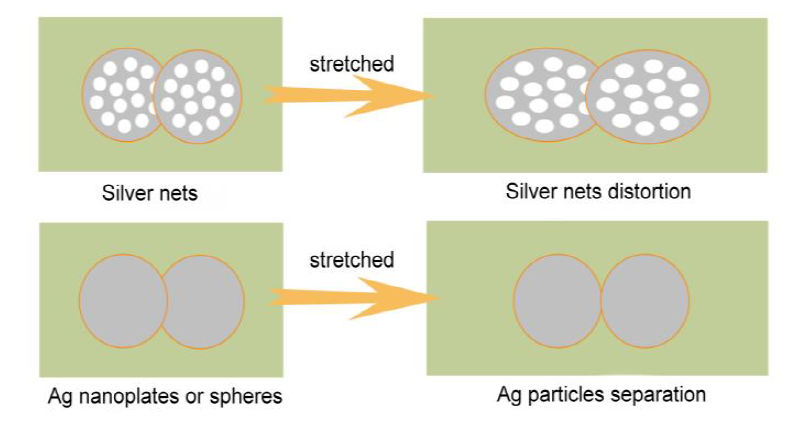Flexible and stretchable conductive materials have received significant attention in several applications such as flexible displays and sensors. In this paper, we report a highly dispersed porous Ag nanoflakes with clean surfaces were fabricated through an explosive growth process. The evolution process from silver nanoflakes to nanomeshes occurred by the novel “dissolution–recrystallization” solvothermal process. The as-obtained Ag meshes have the dual nature of nanoflakes and nanoparticles, which could create an intercross and interpenetration conductive network structures between silver and polymer in the printed elastic conductor, therefore, the silver meshes as conductive fillers used in elastic conductor simultaneously exhibit high conductivity and mechanical durability.

